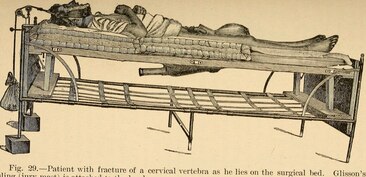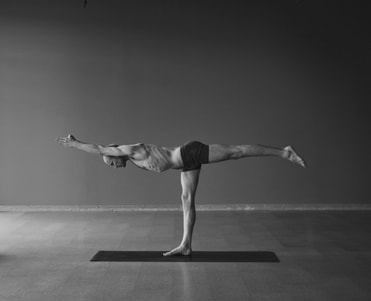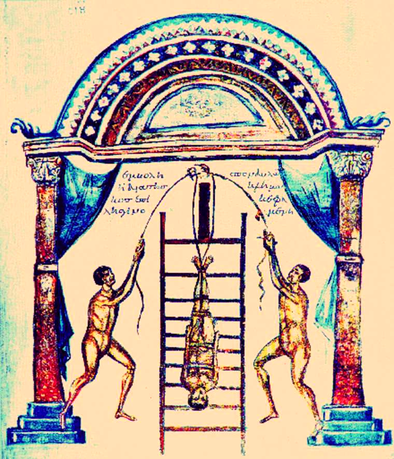 From "Saunders Medical Hand-Atlases - Fractures and Disclocations", 1902 From "Saunders Medical Hand-Atlases - Fractures and Disclocations", 1902 Traction the spine! Natural human traction! We hear these phrases in yoga classes. But what is traction? Do postures really provide traction?! The quick answer: No, yoga postures do not traction the spine. Here is why. CONTEXT Traction Therapy is defined as a technique that separates the spinal vertebrae by mechanical force. Interestingly, there is evidence of the use of traction dating back 4,000 years. Historical records show that even Hippocrates invented an apparatus to traction the spine around the 4th century BCE. TWENTIETH CENTURY The early twentieth century was the era when asana flourished and health of the body was of primary importance to the evolving practice of yoga. Not coincidentally, this was also an era when low back pain was commonly being treated using traction devices. Given this overlap, the language of traction in yoga makes sense as yoga swallowed up a lot of health-based language of the era. (Other examples include the focus on the spine in general, deep breathing, circulation, focusing on the organs and glands, to name a few.) Furthermore, it makes sense that since traction was popular in the early twentieth century particularly within British medicine, that it would influence modern yoga as it developed in Colonial India. Today traction is most often used as a method to reset a dislocated joint. Significant external force is applied to put the body back together from an injury. It is less common that traction is used today as a therapy.  It is commonly said that traction occurs in Balancing Stick, but this is not physically possible due to the lack of apparatus. It is commonly said that traction occurs in Balancing Stick, but this is not physically possible due to the lack of apparatus. TRACTION IN YOGA As we saw from the definition above, traction requires external force. Mechanical force is applied to the body. This force can come from weights or pulleys. So, can we use traction in a bodyweight movement? The answer is no. We cannot traction in yoga, because there is no external force. Often it is said that reaching the arms tractions the spine. But this is not the case. The shoulders actually get there stability from the spine and do not move the spine. Any reaching with the arms is called shoulder elevation, essentially engagement of the upper trapezius, rhomboids and levator scapulae. Even if two people pull on the arms and lifted leg in Balancing Stick, this will still not traction the spine. This is because the joints that would be receiving the force of the pull are the wrists, elbows, shoulders and the ankles, knees and hips. These are not the spine. SUMMARY While the language of traction makes sense for the evolution of yoga, actual traction is not possible in a bodyweight movement. (The small caveat to this the use of gravity in very specific circumstances.) Traction requires external force. However in postures where traction is taught, like Balancing Stick for example, the spine cannot traction because there is nothing pulling on it. Any movement of the body which makes the spine look like it is getting longer, is not actually the vertebrae separating. There is not a scenario in which "natural human traction" without external force is possible. Even Hippocrates needed a contraption to traction the spine. Source: Ralph E. Gay, Jeffrey S. Brault, CHAPTER 15 - Traction Therapy, Editor(s): Simon Dagenais, Scott Haldeman, Evidence-Based Management of Low Back Pain, Mosby, 2012, Pages 205-215, (https://www.sciencedirect.com/science/article/pii/B9780323072939000155)
0 Comments
Leave a Reply. |
AUTHORSScott & Ida are Yoga Acharyas (Masters of Yoga). They are scholars as well as practitioners of yogic postures, breath control and meditation. They are the head teachers of Ghosh Yoga.
POPULAR- The 113 Postures of Ghosh Yoga
- Make the Hamstrings Strong, Not Long - Understanding Chair Posture - Lock the Knee History - It Doesn't Matter If Your Head Is On Your Knee - Bow Pose (Dhanurasana) - 5 Reasons To Backbend - Origins of Standing Bow - The Traditional Yoga In Bikram's Class - What About the Women?! - Through Bishnu's Eyes - Why Teaching Is Not a Personal Practice Categories
All
Archives
May 2024
|







 RSS Feed
RSS Feed